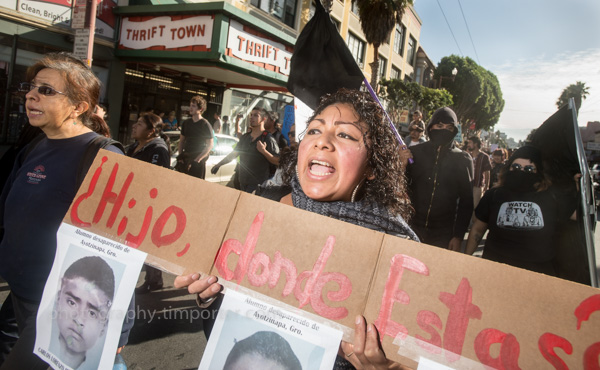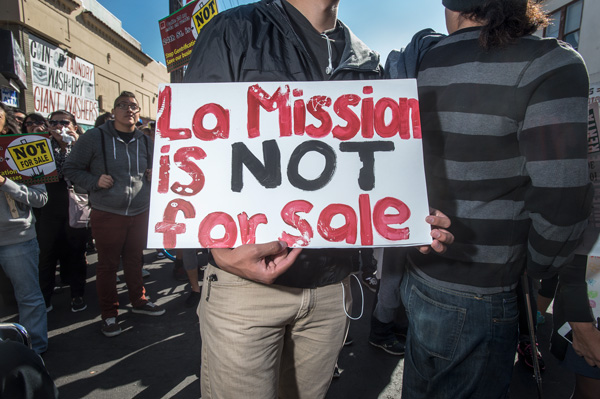43 students. 43 young people kidnapped in the night. 43 sons and daughters murdered by the hands of corruption. 43 bodies discarded and burned like household trash. 43 chances for a better future lost. 43 more reasons to mourn for Mexico.
The 43 slain university students of Ayotzinapa died because on Sept. 26 they commandeered several public buses and blocked a highway, a common form or political protest in Mexico, and by doing so interfered with the wife of the mayor of Iguala, one of the most violent and corrupt cities in the Guerrero, one of Mexico’s most violent and corrupt states. She was en route to give a speech, found the road blocked and called her husband to demand he do something about it. The mayor, José Luis Abarca, ordered the local police to attack them. The cops handed them to a criminal gang associated with the narcos who control the region. And the students disappeared.
All this happened with the same impunity on the part of the mayor, the police and the narcos that infects all of Mexico and has quite literally allowed killers of all political and illegal persuasion to get away with murder for years.
Since the beginning of what has come to be called the Mexican Drug War, launched in 2006 by then-President Felipe Calderón again the web of cartels who generate between up to $50 billion in illegal drug sales annually and control 90 percent of the cocaine entering the United State, the official death toll of the violence between the cartels, between the government and the cartels and between both of them and the innocent citizens of Mexico – like the 43 students of Ayotzinapa – has reached 60,000. That’s the official number. Unofficially, human rights observers put the estimate at 120,000.
For some perspective, consider that 58,220 Americans died in the Vietnam War, a conflict that compelled my generation to fill the streets of the U.S. capital in protest and led to vast changes in American society.
Of course, Vietnam was an American war and a draft existed that pulled those who could not dodge the conflict directly into it, but still one might imagine that a war of similar lethality occurring in a country visited annually by more than 6 million Americans would spark a modicum of outrage here at home.
Not so.
Thus far, the official U.S. response has been little more than a shrug. The Obama administration has described the fate of the 43 students and the insipid response of the government of President Enrique Peña Nieto as “worrisome.”
That may change. The street protests that began in Iguala after the fate of the students was learned have spread throughout the county and turned violent in Mexico City. Peña Nieto, who ignored the kidnapping for 33 days before speaking publicly about and then left the country for a trade conference in China, has returned to hear a growing number of cries for his resignation (fueled in part by the revelation that he and his wife, a soap-opera star, had a secret $7 million house in a wealth enclave above Mexico City).
American news media are increasingly covering the issue and Mexican-American communities in the United are organizing and marching in the hope of galvanizing more public attention. One of those marches happened Saturday in San Francisco, with 500 people walking from 24th and Mission, once of the heart of the city’s Latino community, to Powell and Market streets. More protests are planned, once in conjunction with general strike set to occur in Mexico on Nov. 20, the anniversary of the Mexican revolution, and another in 43 U.S. cities in December.
What can you do? Many things. From a little to a lot.
Write or tweet your congressional representatives. Tell them you’re outraged, that you’ve had enough, that you want the U.S. government to demand that is second-largest trade partner (U.S.-Mexico trade totaled $600 billion in 2013) clean house.
If you smoke dope or do coke (and why do you?), then stop. Nearly all the coke and much of the weed comes through Mexico. Your high supports the cartels, which in turn corrupt the government further, which engenders a state of impunity, which allows crimes of all sorts, from tax evasion to mass murder, to go unpunished.
March. Walk in the streets with the Mexicans who have come to our country, legally and illegally, in order to escape the very corruption that lead to the deaths of the 43 students. With more than 33 million people of Mexican origin living in the United States (and that’s not counting second-, third-, fourth-, etc. generations of Mexican Americans) this is as much our war at it is Mexico’s.



